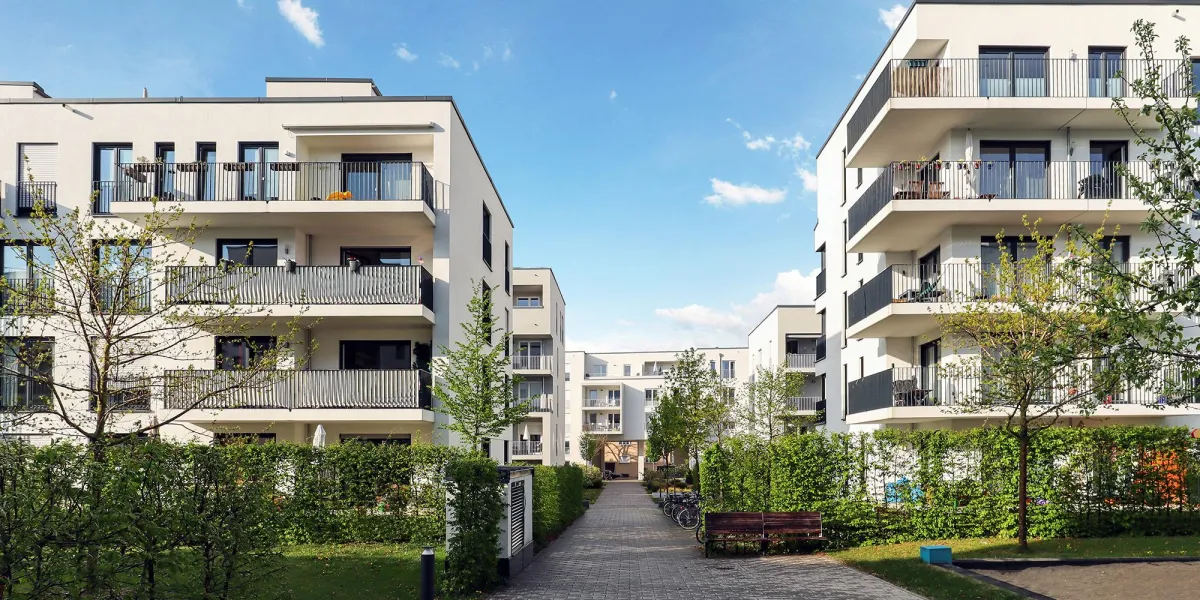Have you ever heard the word “cash flow”? It must pop up all the time if you are involved in real estate investments (or simply if you watch “Shark Tank” and you can hear it all the time from Kevin O’Leary aka Mr. Wonderful). If you’ve been spending time researching the pros and cons of Multifamily real estate, you must likely notice that regular cash flow is one of the most important factors. It doesn’t matter if the investment assets are large or small, as long as they generate steady income to be desirable to many investors, especially those that are easing into retirement. It is hard to deny that apartment complexes are one of the best cash flow investments. But how exactly does Multifamily real estate cash flow work, and is it a safe investment compared to other common assets like stocks, bonds, and other forms of real estate? Let’s imagine if you are in a 200-unit deal with a group of other investors and a group of syndicators, taking advantage of the hot market right now, you all acquire that apartment complex in a promising and growing area. And then, it’s time to see how the cash flow is going to be calculated.
COMMUNICATION:
We know that you are very excited and are wondering why we need to talk about communication. But let me tell you, this is actually one of the first steps for you to understand more about your cash flow return. The syndicator group (also known as General Partners) will keep regular communication with you at least once a month. They want to make sure that you will be updated with all changes with the property such as financial statements, renovations, maintenance issues, occupancy statistics, market trends, and most of the time will be photos giving you a virtual update on the progress, etc. Believe it or not, this is the most exciting part because the investment project is like your child and you will love to see how it can grow more and more through time.
HOW TO CALCULATE CASH FLOW?
Before we deep dive into where the cash flow comes from, we need to know how a syndication multifamily deal structure works. Most of the time, a deal will fall into a 70-30 deal structure which means 70% of the equity and the “cash flow in some instances” (we will explain more as you read along the article) belongs to you as investors (also known as Limited Partners), and the remaining 30% of the equity and the “cash flow in some instances” goes to the syndicator group. In some special cases, depending on the deal itself, it could even be 60-40 deals or 80-20 deals with the bigger percentage going toward investors.
Let’s talk about cash flow. In order to finalize the amount of cash flow annually to investors, it will depend on these factors: Gross Potential Income, Net Rental Income, Operating Expenses, Net Operating Income, Mortgage, and Capital Reserve.
Gross Potential Income (GPI) is a hypothetical calculation of the total rental income the property can produce if all units were fully leased and rented at market rents with a zero vacancy rate. There are multiple other incomes rather than rental checks, but for apartment complexes, the main source of income is those rent payments coming from tenants beginning each month. In this specific example that we are working on, let’s just assume and focus on those rental checks as the only income. So for our 200-unit apartment, we will charge $750 for rent monthly per unit. With that being said, our Gross Potential Income (GPI) is $150,000 monthly or $1,800,000 annually.
Gross Potential Income (GPI) per month:
$750 x 200 units = $150,000
Gross Potential Income (GPI) per year:
$150,000 x 12 months = $1,800,000 (Woohooo!)
We obviously won’t get a $1,800,000 check as much as we would love to. There are so many factors that can affect GPI like vacancy (e.g. the number of units that are not leased), loss to lease (e.g. the number of units that are leased with an under-market price), or concession (e.g. “first-month rent is free”), etc. That is the reason why we get to know the definition of Net Rental Income. It is simply the amount of money that your tenants pay for their rents after you subtract all expenses. Let’s assume that our apartment just only factors on vacancy costs so there are 20 units (10%) vacant. Again, each unit rent is $750 so if the vacant rate stays the same throughout the year, then the annual vacancy cost will be $180,000. That leads to our Net Rental Income equaling $1,620,000.
Vacancy Cost per year (assuming 20 units are vacant):
($750 x 20 units) x 12 months = $180,000
Net Rental Income per year:
Annual Gross Potential Income (GPI) - Annual Vacancy Cost
or
$1,800,000 - $180,000 = $1,620,000
Like every other business, providing income will come together with paying expenses. Operating Expenses of an apartment can be something like maintenance and repairs, utilities, taxes, insurances, management fees, legal fees, etc. Just like Net Rental Income, there are tons of factors that can affect Operating Expenses, and different apartments will have different expenses. For our scenario, let’s simply assume that all expenses per month are $68,000.
Operating Expenses per year:
$68,000 x 12 months = $816,000
Get your annual Net Rental Income, then take out the amount of annual Operating Expenses, you will have the Net Operating Income (NOI). It is a valuation method used by real estate professionals to determine the precise value of the income-producing property.
Net Operating Income (NOI):
Annual Net Rental Income - Annual Operating Expenses
or
$1,620,000 - $816,000 = $804,000
Mortgage will be one of your biggest expenses. In all property transactions, you have to put down a down payment (usually around 20-40% of the cost to purchase), and the lender will lend you the rest of the apartment’s cost (around 80-60% left). As a big part of the expenses of each month, you will have to pay the lender back the principal, plus interest. We will just estimate that the payment of principal and interest per month is $40,000, then the Mortgage will cost $480,000 annually.
Mortgage payment per year:
$40,000 x 12 months = $480,000
Last but not least is the Capital Reserve. This is one of the expenses that most syndicators/investors are often overlooked or even forgot to consider. This is kind of like a fund or an escrow account that sets a portion of the property's income aside for future repair and/or improvement. Banks and/or lenders always make sure that we should put some income aside to prepare for any unexpected expense. Some generalized rules of thumbs are
Property that is 1970 or older, lenders usually require $350 per unit.
Property that is 1970 to about 1980, lenders require $300 per unit.
Property that is 1980 or newer, a lender typically requires less than others above which is $250 per unit.
For our example, let assume the property is built-in 1985. Our capital reserve should be $350 X 200= $70,000, which can definitely impact your cash flow.
Finally, the moment you have been waiting for, let’s jump to the “wonderful land” called Cash Flow. In order to arrive at the Cash Flow amount, the Mortgage expense needs to be subtracted from Net Operating Income.
Cash Flow:
Annual Net Operating Income - Annual Mortgage
or
$804,000 - $480,000 - $70,000= $254,000
CASH FLOW DISTRIBUTION:
Remember when we discussed the deal structure at the beginning of this article and promised that we will go more in-depth on 70/30 percent of the cash flow distribution? Well, here we are! Let’s make this deal to be a 70/30 deal. Technically, 70% of the $254,000 cash flow amount of that year will belong to you and other investors. However, great news for investors, the majority of syndicators will distribute cash flow in a “preferred return” manner. This means that the operator will make sure that investors will receive a specific percentage of their investment back every year (usually it’s around 6-9% of their initial investment). For example, if you invested $100,000 in this deal, you should receive $6,000-$9,000 cash flow each year. Now, What if the 6-9% cash flow amount needed to distribute to investors is more than the amount shown in the example below, you may ask? Most of the time, syndicators will use their portion of the cash flow to compensate for the shortage for their investors. This is how we, as an operator, make sure our investors get paid first before we do. Cash flow will be distributed to investors in a specific time frame (usually every quarterly).
Cash Flow for investors:
$254,000 x 70% = $177,800
If you pay attention, you will notice that cash flow won’t be the same amount every year. And the reason is simply that all incomes, expenses, and the market itself can vary throughout the years of the project. Also, the syndicator's group (General Partners) will always continue stabilizing and improving the apartments (this is one of the reasons they get a 30% share from the deal!).
Finally, let’s keep in mind that all investments are not guaranteed deals. Every investment comes with its own risks. But overall, Multifamily Investing can be a safer, more stable, and more controlled passive investment that provides investors with the benefits of multifamily ownership without the hassle of actually managing the property. This provides you with a passive income so you can use your time to pursue other interests.
To learn more about multifamily investing or continue to get updated news about investment space, feel free to register your name and email on our website. For new investors, you can benefit from our articles regarding different topics across multifamily investing as well as market updates. For experienced investors, you can be updated on our current or next opportunities to invest. Let us be your guide and partners through multifamily investing.
Understand Cash Flow In Multifamily Real Estate Investment
Have you ever heard the word “cash flow”? It must pop up all the time if you are involved in real estate investments (or simply if you watch “Shark Tank” and you can hear it all the time from Kevin O’Leary aka Mr. Wonderful). If you’ve been spending time researching the pros and cons of Multifamily real estate, you must likely notice that regular cash flow is one of the most important factors. It doesn’t matter if the investment assets are large or small, as long as they generate steady income to be desirable to many investors, especially those that are easing into retirement. It is hard to deny that apartment complexes are one of the best cash flow investments. But how exactly does Multifamily real estate cash flow work, and is it a safe investment compared to other common assets like stocks, bonds, and other forms of real estate? Let’s imagine if you are in a 200-unit deal with a group of other investors and a group of syndicators, taking advantage of the hot market right now, you all acquire that apartment complex in a promising and growing area. And then, it’s time to see how the cash flow is going to be calculated.
COMMUNICATION:
We know that you are very excited and are wondering why we need to talk about communication. But let me tell you, this is actually one of the first steps for you to understand more about your cash flow return. The syndicator group (also known as General Partners) will keep regular communication with you at least once a month. They want to make sure that you will be updated with all changes with the property such as financial statements, renovations, maintenance issues, occupancy statistics, market trends, and most of the time will be photos giving you a virtual update on the progress, etc. Believe it or not, this is the most exciting part because the investment project is like your child and you will love to see how it can grow more and more through time.
HOW TO CALCULATE CASH FLOW?
Before we deep dive into where the cash flow comes from, we need to know how a syndication multifamily deal structure works. Most of the time, a deal will fall into a 70-30 deal structure which means 70% of the equity and the “cash flow in some instances” (we will explain more as you read along the article) belongs to you as investors (also known as Limited Partners), and the remaining 30% of the equity and the “cash flow in some instances” goes to the syndicator group. In some special cases, depending on the deal itself, it could even be 60-40 deals or 80-20 deals with the bigger percentage going toward investors.
Let’s talk about cash flow. In order to finalize the amount of cash flow annually to investors, it will depend on these factors: Gross Potential Income, Net Rental Income, Operating Expenses, Net Operating Income, Mortgage, and Capital Reserve.
Gross Potential Income (GPI) is a hypothetical calculation of the total rental income the property can produce if all units were fully leased and rented at market rents with a zero vacancy rate. There are multiple other incomes rather than rental checks, but for apartment complexes, the main source of income is those rent payments coming from tenants beginning each month. In this specific example that we are working on, let’s just assume and focus on those rental checks as the only income. So for our 200-unit apartment, we will charge $750 for rent monthly per unit. With that being said, our Gross Potential Income (GPI) is $150,000 monthly or $1,800,000 annually.
Gross Potential Income (GPI) per month:
$750 x 200 units = $150,000
Gross Potential Income (GPI) per year:
$150,000 x 12 months = $1,800,000 (Woohooo!)
We obviously won’t get a $1,800,000 check as much as we would love to. There are so many factors that can affect GPI like vacancy (e.g. the number of units that are not leased), loss to lease (e.g. the number of units that are leased with an under-market price), or concession (e.g. “first-month rent is free”), etc. That is the reason why we get to know the definition of Net Rental Income. It is simply the amount of money that your tenants pay for their rents after you subtract all expenses. Let’s assume that our apartment just only factors on vacancy costs so there are 20 units (10%) vacant. Again, each unit rent is $750 so if the vacant rate stays the same throughout the year, then the annual vacancy cost will be $180,000. That leads to our Net Rental Income equaling $1,620,000.
Vacancy Cost per year (assuming 20 units are vacant):
($750 x 20 units) x 12 months = $180,000
Net Rental Income per year:
Annual Gross Potential Income (GPI) - Annual Vacancy Cost
or
$1,800,000 - $180,000 = $1,620,000
Like every other business, providing income will come together with paying expenses. Operating Expenses of an apartment can be something like maintenance and repairs, utilities, taxes, insurances, management fees, legal fees, etc. Just like Net Rental Income, there are tons of factors that can affect Operating Expenses, and different apartments will have different expenses. For our scenario, let’s simply assume that all expenses per month are $68,000.
Operating Expenses per year:
$68,000 x 12 months = $816,000
Get your annual Net Rental Income, then take out the amount of annual Operating Expenses, you will have the Net Operating Income (NOI). It is a valuation method used by real estate professionals to determine the precise value of the income-producing property.
Net Operating Income (NOI):
Annual Net Rental Income - Annual Operating Expenses
or
$1,620,000 - $816,000 = $804,000
Mortgage will be one of your biggest expenses. In all property transactions, you have to put down a down payment (usually around 20-40% of the cost to purchase), and the lender will lend you the rest of the apartment’s cost (around 80-60% left). As a big part of the expenses of each month, you will have to pay the lender back the principal, plus interest. We will just estimate that the payment of principal and interest per month is $40,000, then the Mortgage will cost $480,000 annually.
Mortgage payment per year:
$40,000 x 12 months = $480,000
Last but not least is the Capital Reserve. This is one of the expenses that most syndicators/investors are often overlooked or even forgot to consider. This is kind of like a fund or an escrow account that sets a portion of the property's income aside for future repair and/or improvement. Banks and/or lenders always make sure that we should put some income aside to prepare for any unexpected expense. Some generalized rules of thumbs are
Property that is 1970 or older, lenders usually require $350 per unit.
Property that is 1970 to about 1980, lenders require $300 per unit.
Property that is 1980 or newer, a lender typically requires less than others above which is $250 per unit.
For our example, let assume the property is built-in 1985. Our capital reserve should be $350 X 200= $70,000, which can definitely impact your cash flow.
Finally, the moment you have been waiting for, let’s jump to the “wonderful land” called Cash Flow. In order to arrive at the Cash Flow amount, the Mortgage expense needs to be subtracted from Net Operating Income.
Cash Flow:
Annual Net Operating Income - Annual Mortgage
or
$804,000 - $480,000 - $70,000= $254,000
CASH FLOW DISTRIBUTION:
Remember when we discussed the deal structure at the beginning of this article and promised that we will go more in-depth on 70/30 percent of the cash flow distribution? Well, here we are! Let’s make this deal to be a 70/30 deal. Technically, 70% of the $254,000 cash flow amount of that year will belong to you and other investors. However, great news for investors, the majority of syndicators will distribute cash flow in a “preferred return” manner. This means that the operator will make sure that investors will receive a specific percentage of their investment back every year (usually it’s around 6-9% of their initial investment). For example, if you invested $100,000 in this deal, you should receive $6,000-$9,000 cash flow each year. Now, What if the 6-9% cash flow amount needed to distribute to investors is more than the amount shown in the example below, you may ask? Most of the time, syndicators will use their portion of the cash flow to compensate for the shortage for their investors. This is how we, as an operator, make sure our investors get paid first before we do. Cash flow will be distributed to investors in a specific time frame (usually every quarterly).
Cash Flow for investors:
$254,000 x 70% = $177,800
If you pay attention, you will notice that cash flow won’t be the same amount every year. And the reason is simply that all incomes, expenses, and the market itself can vary throughout the years of the project. Also, the syndicator's group (General Partners) will always continue stabilizing and improving the apartments (this is one of the reasons they get a 30% share from the deal!).
Finally, let’s keep in mind that all investments are not guaranteed deals. Every investment comes with its own risks. But overall, Multifamily Investing can be a safer, more stable, and more controlled passive investment that provides investors with the benefits of multifamily ownership without the hassle of actually managing the property. This provides you with a passive income so you can use your time to pursue other interests.
To learn more about multifamily investing or continue to get updated news about investment space, feel free to register your name and email on our website. For new investors, you can benefit from our articles regarding different topics across multifamily investing as well as market updates. For experienced investors, you can be updated on our current or next opportunities to invest. Let us be your guide and partners through multifamily investing.
Don't Miss Out Our "DEAL OF THE WEEK"
QUICK LINKS
See for yourself why Investors love working with us!

We maximize investor returns by increasing net operating income throughout the holding period through a hands-on management style of heavy renovation and aggressive lease-up.
Under Knight Land Company LLC Brokerage
© 2021 KNN Capital Partners.
All Rights Reserved.










